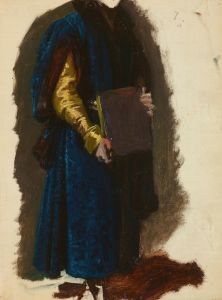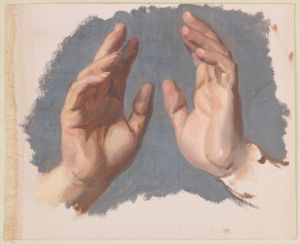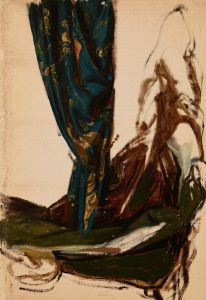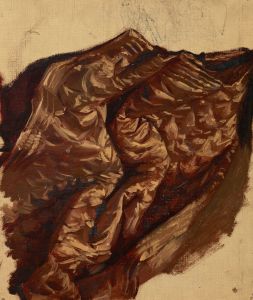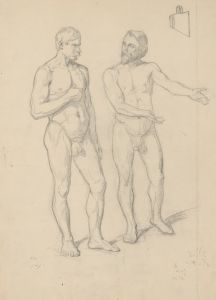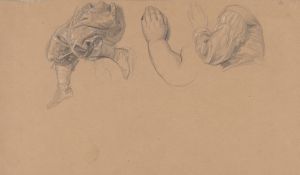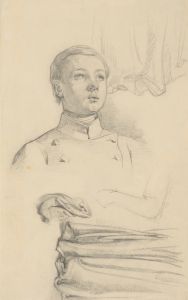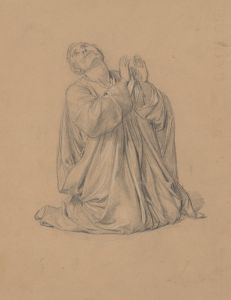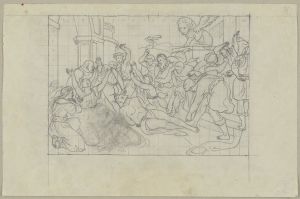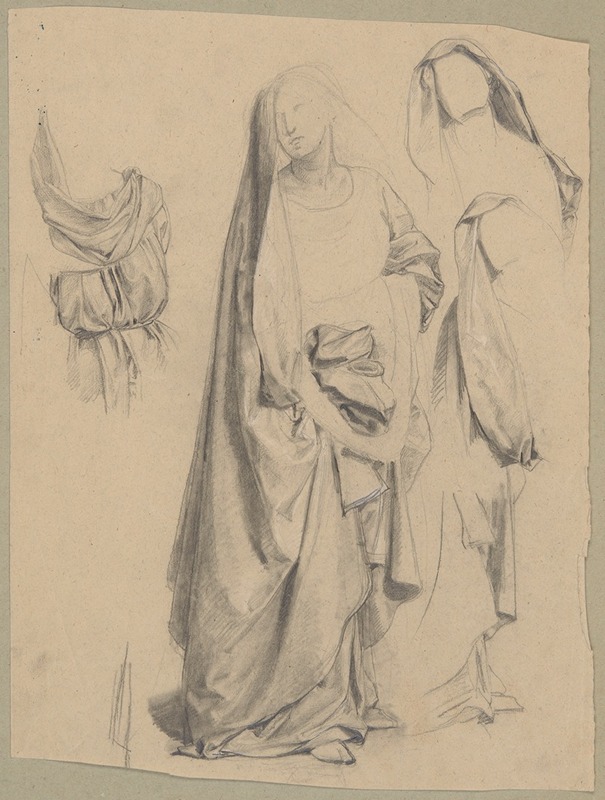
Studium postaci Marii Jakubowej do obrazu ‘Trzy Marie’
A hand-painted replica of Józef Simmler’s masterpiece Studium postaci Marii Jakubowej do obrazu ‘Trzy Marie’, meticulously crafted by professional artists to capture the true essence of the original. Each piece is created with museum-quality canvas and rare mineral pigments, carefully painted by experienced artists with delicate brushstrokes and rich, layered colors to perfectly recreate the texture of the original artwork. Unlike machine-printed reproductions, this hand-painted version brings the painting to life, infused with the artist’s emotions and skill in every stroke. Whether for personal collection or home decoration, it instantly elevates the artistic atmosphere of any space.
Józef Simmler, a prominent Polish painter of the 19th century, is known for his historical and religious paintings, which often reflect a deep sense of emotion and realism. One of his notable works is the painting "Trzy Marie" (The Three Marys), which depicts a biblical scene involving three women named Mary. This painting is a testament to Simmler's skill in capturing the human form and emotion, and it holds a significant place in Polish art history.
The study for the figure of Mary, the wife of Cleopas, in the painting "Trzy Marie" is an important aspect of Simmler's preparatory work. Simmler was meticulous in his approach to creating his paintings, often conducting detailed studies of individual figures before incorporating them into his larger compositions. This practice allowed him to explore different poses, expressions, and lighting effects, ensuring that each character in his paintings was rendered with precision and depth.
In the context of "Trzy Marie," the figure of Mary, the wife of Cleopas, is one of the three women who, according to Christian tradition, visited the tomb of Jesus after his crucifixion. This scene is a poignant moment of mourning and revelation, as the women discover the empty tomb and learn of Jesus' resurrection. Simmler's depiction of this event is characterized by its emotional intensity and attention to detail, qualities that are evident in his studies for the painting.
Simmler's study for Mary, the wife of Cleopas, would have involved careful consideration of her posture, facial expression, and attire. These studies were typically done in pencil or charcoal and served as a foundation for the final oil painting. Through these preparatory sketches, Simmler was able to experiment with different artistic elements, such as the interplay of light and shadow, to enhance the narrative and emotional impact of the final work.
The painting "Trzy Marie" itself is a reflection of Simmler's ability to convey complex emotions through his art. The figures are depicted with a sense of grace and solemnity, capturing the gravity of the biblical moment. Simmler's use of color and composition further enhances the emotional resonance of the scene, drawing viewers into the narrative and inviting them to reflect on its significance.
Józef Simmler's contribution to Polish art is significant, as he was one of the leading figures in the development of historical and religious painting in Poland during the 19th century. His works are celebrated for their technical skill, emotional depth, and historical accuracy, making them enduring pieces of cultural heritage.
In summary, the study for the figure of Mary, the wife of Cleopas, in Józef Simmler's "Trzy Marie" is an example of the artist's dedication to his craft and his ability to bring biblical stories to life through his art. The painting remains a significant work in the canon of Polish art, admired for its emotional power and artistic excellence.





